The Forbidden City is a historic palace complex in the heart of Beijing, China. It was the home of 24 Chinese emperors and their courts from the Ming dynasty to the end of the Qing dynasty. It is also known as the Palace Museum, which houses many ancient artworks and cultural relics. The Forbidden City is one of the world’s largest and most well-preserved ancient wooden structures and has been a UNESCO World Heritage site since 1987. The name Forbidden City comes from ordinary people not being allowed to enter the palace without special permission. Only the emperor, his family, his officials, and his servants could access the inner sanctum of the complex. The palace was designed to reflect the supreme power and dignity of the emperor, who was considered the son of heaven. The buildings’ layout, architecture, and decorations followed strict rules of feng shui, the Chinese geomantic practice of harmonizing human and natural forces. The Forbidden City covers an area of 7.75 million square feet (0.72 million square meters), which is about three times larger than the Louvre Palace in France. It has more than 90 courtyards, 980 buildings, and 8,728 rooms. The complex is divided into the Outer Court and the Inner Court. The Outer Court was where the emperor held ceremonies and conducted state affairs, while the Inner Court was where he lived with his family and concubines. The main buildings are arranged along a central axis, which runs from south to north. The most important and magnificent structures are the Hall of Supreme Harmony, the Hall of Central Harmony, and the Hall of Preserving Harmony, where the emperor received his ministers and guests. The Forbidden City is a masterpiece of Chinese architecture and culture and a symbol of China’s imperial history. It attracts millions of visitors every year, who marvel at its grandeur and beauty. The palace is also a treasure trove of art and history, as it displays thousands of exquisite paintings, sculptures, ceramics, jade, bronze, and other artifacts from various dynasties.
What is the Forbidden City?
The Forbidden City is a large imperial palace complex in Beijing, China. It was the home of the Ming and Qing dynasties emperors from 1420 to 1912. It is also known as the Palace Museum, which houses many cultural relics and artworks. The Forbidden City is located in the heart of Beijing, facing Tiananmen Square to the south. It is surrounded by a moat and a high wall with four gates. The main entrance is the Meridian Gate (Wumen) on the south side. The Forbidden City was built from 1406 to 1420 by the Yongle Emperor of the Ming dynasty, who moved the capital from Nanjing to Beijing. It took 14 years and over one million workers and craftsmen to complete the construction. The Forbidden City was built by the Ming and Qing emperors, who hired the best architects, engineers, and artisans. The palace complex reflects the traditional Chinese feng shui principles, symmetry, and harmony. The buildings are mostly wooden, with yellow-glazed tile roofs, red walls, and white marble bases. The Forbidden City covers an area of 7.75 million square feet (0.72 million square meters), which is over three times larger than the Louvre Palace in France. It has more than 90 courtyards, 980 buildings, and 8,728 rooms. The highest point of the palace is the Hall of Supreme Harmony (Taihedian), which stands at 115 feet (35.05 meters) tall.
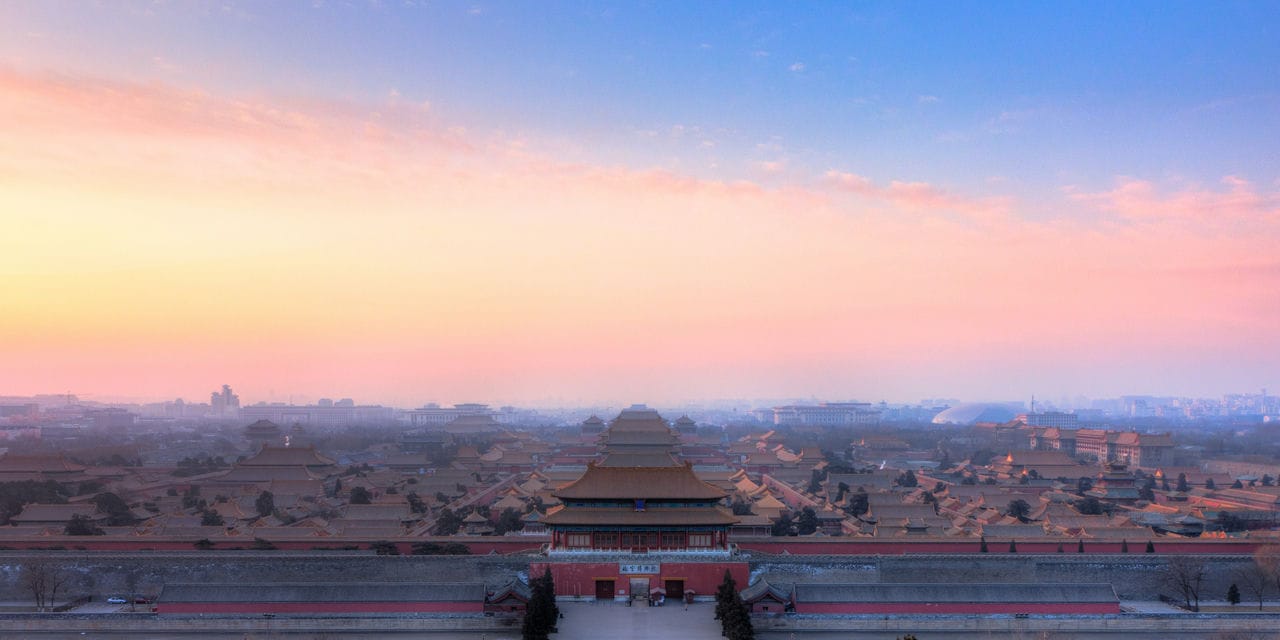
What architectural style is most prominent in Forbidden City?
The architectural style that is most prominent in the Forbidden City is the traditional Chinese architectural style that was influenced by cosmological, cultural, and feng shui principles. It also reflects the hierarchical and symmetrical layout of the palace complex and the use of wood, color, and roof shapes to indicate the status and function of the buildings. The main feature of the architectural style is the wooden structure, which consists of beams, columns, brackets, and roofs. The walls are not load-bearing but serve as partitions. The roofs are mostly covered with yellow glazed tiles, symbolizing imperial power. The buildings are decorated with red walls, white marble bases, and golden ornaments. The roofs have different shapes and numbers of ridges, depending on the rank and purpose of the building. The Hall of Supreme Harmony has a double-eave hip-and-gable roof with ten ridges, which is the highest and most elaborate in the Forbidden City. The architectural style also follows feng shui principles, which aim to create harmony between man and nature. The palace complex is aligned with the south-north axis of Beijing, which is considered auspicious. The buildings are arranged symmetrically along the axis, with each side having a corresponding counterpart. The palace is surrounded by a moat and a wall with four gates, which form a protective barrier. The inner court has a garden at the north end, which provides a natural and relaxing space for the imperial family.
What structural engineering principles are employed in the construction of the Forbidden City?
The four major structural engineering principles were employed in constructing the Forbidden City. Firstly, the Forbidden City uses a wooden system consisting of beams, columns, brackets, and roofs. The wooden structure is flexible and resilient, as it can absorb and dissipate seismic energy. The columns are not fixed to the ground but rest freely on stone bases, allowing them to move laterally during an earthquake. The beams and brackets are interlocked with mortise-and-tenon joints without nails or glue, which can prevent the structure from collapsing. The wooden structure system is also fire-resistant, coated with a lacquer layer, and painted with red pigment. Secondly, the Forbidden City employs a modular design, meaning the buildings are standardized and uniform in size, shape, and style. The modular design simplifies the construction process and reduces the waste of materials. The buildings are arranged in a grid pattern, each unit having a specific function and status. The modular design also facilitates the maintenance and repair of the buildings, as the damaged parts can be easily replaced with identical ones. The modular design reflects the hierarchical and orderly nature of the imperial system. Thirdly, the Forbidden City incorporates the principles of feng shui, which aim to create harmony between man and nature. Feng shui is based on the belief that the natural environment has a flow of energy, or qi, that affects the well-being and fortune of the people. The Forbidden City is aligned with the south-north axis of Beijing, which is considered auspicious. The buildings are arranged symmetrically along the axis, with each side having a corresponding counterpart. The palace is surrounded by a moat and a wall with four gates, which form a protective barrier. The inner court has a garden at the north end, which provides a natural and relaxing space for the imperial family. Lastly, the Forbidden City showcases the traditional Chinese architectural style, which is influenced by cosmological, cultural, and aesthetic principles. The architectural style is characterized by the use of wood, color, and roof shapes to indicate the status and function of the buildings. The roofs are mostly covered with yellow glazed tiles, symbolizing imperial power. The buildings are decorated with red walls, white marble bases, and golden ornaments. The roofs have different shapes and numbers of ridges, depending on the rank and purpose of the building. The Hall of Supreme Harmony has a double-eave hip-and-gable roof with ten ridges, which is the highest and most elaborate in the Forbidden City. The architectural style also follows feng shui principles, symmetry, and harmony.
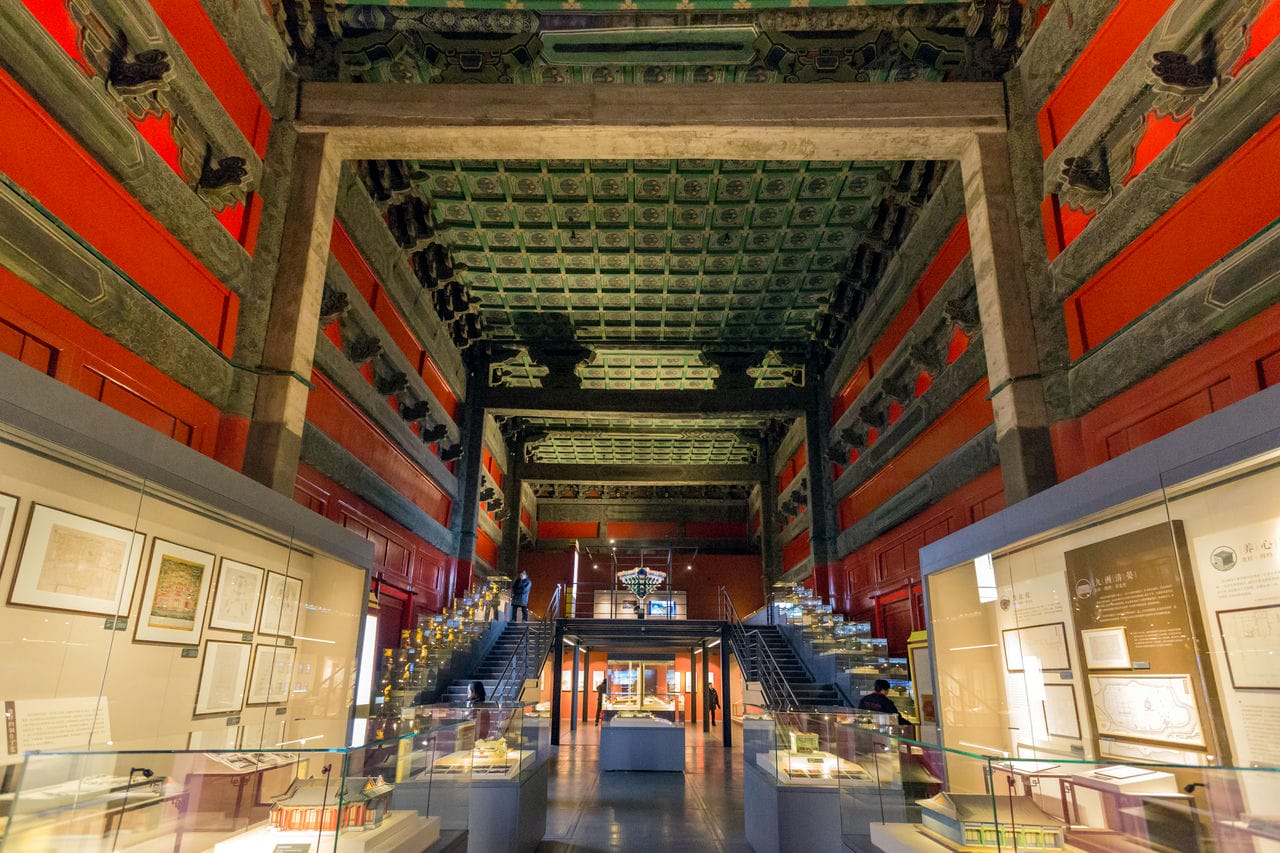
Who designed the Forbidden City?
The Forbidden City was designed by a popular scholar and artist, Kuai Xiang. He led a team of engineers and architects of the Forbidden City, including Cai Xin, Nguyen An, and Lu Xiang. They designed the palace complex according to the traditional Chinese principles of feng shui, symmetry, and harmony. They also used the best materials and craftsmen, such as Phoebe Zhennan wood, yellow glazed tiles, and golden bricks. The Forbidden City was ordered by the Yongle Emperor of the Ming dynasty, who moved the capital from Nanjing to Beijing in 1402. He commissioned the construction of an imperial palace complex in central Beijing, which was completed in 1420. The palace was called the Forbidden City because it was restricted to the emperor and his court. The architectural style of the Forbidden City reflects the cosmological, cultural, and aesthetic values of the Ming and Qing dynasties. The buildings are mostly wooden, with red walls, white marble bases, and yellow roofs. The roofs have different shapes and numbers of ridges, depending on the rank and function of the building. The palace complex is aligned with the south-north axis of Beijing and arranged symmetrically along the axis. The palace is surrounded by a moat and a wall with four gates and has a garden at the north end.
What are the historical design influences visible in Forbidden City?
There are 4 major historical design influences visible in Forbidden City. Firstly, the Forbidden City was influenced by the ancient Chinese philosophy of feng shui, which aims to create harmony between man and nature. Feng shui is based on the belief that the natural environment has a flow of energy, or qi, that affects the well-being and fortune of the people. The Forbidden City is aligned with the south-north axis of Beijing, which is considered auspicious. The buildings are arranged symmetrically along the axis, with each side having a corresponding counterpart. The palace is surrounded by a moat and a wall with four gates, which form a protective barrier. The inner court has a garden at the north end, which provides a natural and relaxing space for the imperial family. Secondly, the Forbidden City was influenced by the traditional Chinese principles of symmetry and harmony, reflecting the imperial system’s hierarchical and orderly nature. The buildings and the ceremonial spaces between them are arranged to convey an impression of great imperial power while reinforcing the insignificance of the individual. The relative importance of a building can be judged not only by its height or width but also by the style of its roof and the number of figurines perched on the roof’s ridges. The roofs have different shapes and numbers of ridges, depending on the rank and function of the building. The Hall of Supreme Harmony has a double-eave hip-and-gable roof with ten ridges, which is the highest and most elaborate in the Forbidden City. Thirdly, the Forbidden City was influenced by the cultural and aesthetic values of the Ming and Qing dynasties, which were the two main dynasties that occupied the palace. The Ming dynasty (1368–1644) was founded by ethnic Han Chinese, who restored the native culture and art after the Mongol rule. The Ming-style is characterized by the use of wood, color, and roof shapes to indicate the status and function of the buildings. The roofs are mostly covered with yellow glazed tiles, symbolizing imperial power. The buildings are decorated with red walls, white marble bases, and golden ornaments. Lastly, the Forbidden City was influenced by the architectural styles of other regions and countries, such as Mongolia, Tibet, India, and Europe. The Forbidden City was built on the site of the former Yuan dynasty palace, which was constructed by the Mongols in the 13th century. The Yuan palace had a square layout, with four gates and a central axis, which was inherited by the Forbidden City. The Yuan Palace also had a large park at the north end, which the Ming and Qing emperors transformed into the Imperial Garden. The Forbidden City also has several Tibetan-style buildings, such as the Pavilion of Buddhist Incense and the Hall of Tibetan Buddhism, which reflect the religious and political ties between the Qing emperors and the Tibetan lamas. The Forbidden City also has some European-style buildings, such as the Hall of Clocks and Watches and the Hall of Western-style mansions, which reflect the cultural and technological exchanges between the Qing emperors and the Western powers.
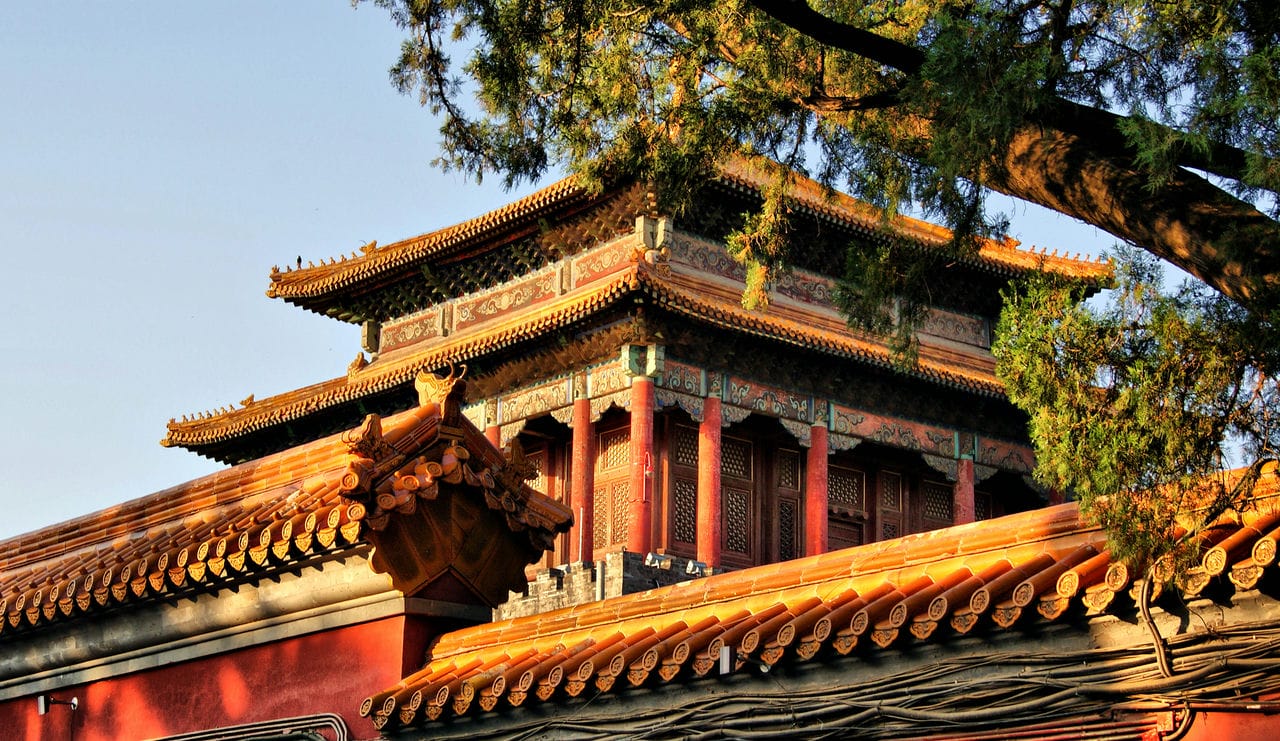
How has the Forbidden City influenced the design of other buildings in China?
The Forbidden City influenced the design of other buildings in China in 4 ways. Firstly, the Forbidden City has influenced the design of government buildings in China, such as the Great Hall of the People, the National Museum of China, and the Tiananmen Gate. These buildings have adopted some of the features of the Forbidden City, such as the symmetrical layout, the south-north axis, the yellow roofs, and the red walls. They also have incorporated elements of China’s culture and history, such as the national emblem, the flag, and the statues of leaders. These buildings aim to convey a sense of authority, dignity, and stability and show respect for the Chinese heritage and sovereignty. Secondly, the Forbidden City has influenced the design of cultural buildings in China, such as the Palace Museum, the National Library of China, and the National Centre for the Performing Arts. These buildings have borrowed some of the styles and motifs of the Forbidden City, such as the hip-and-gable roofs, the dragon and phoenix patterns, and the marble balustrades. They also have added features reflecting China’s artistic and literary traditions, such as paintings, sculptures, and books. These buildings aim to showcase the richness and diversity of China’s culture and promote cultural exchange and cooperation with the world. Thirdly, the Forbidden City has influenced the design of religious buildings in China, such as the Temple of Heaven, the Lama Temple, and the Confucius Temple. These buildings have imitated some of the structures and decorations of the Forbidden City, such as the pavilions, the pagodas, and the lanterns. They also have adapted to China’s religious beliefs and practices, such as the icons, the scriptures, and the rituals. These buildings aim to express the faith and devotion of China’s people and foster interfaith dialogue and harmony with other religions. Lastly, the Forbidden City has influenced the design of residential buildings in China, such as the Siheyuan, the Hutong, and the Shikumen. These buildings have emulated some forms and functions of the Forbidden City, such as the courtyards, the halls, and the gardens. They also have customized to China’s living standards and preferences, such as the furniture, the appliances, and the amenities. These buildings aim to provide comfort and convenience for China’s residents and visitors, as well as to display the modernity and prosperity of China.
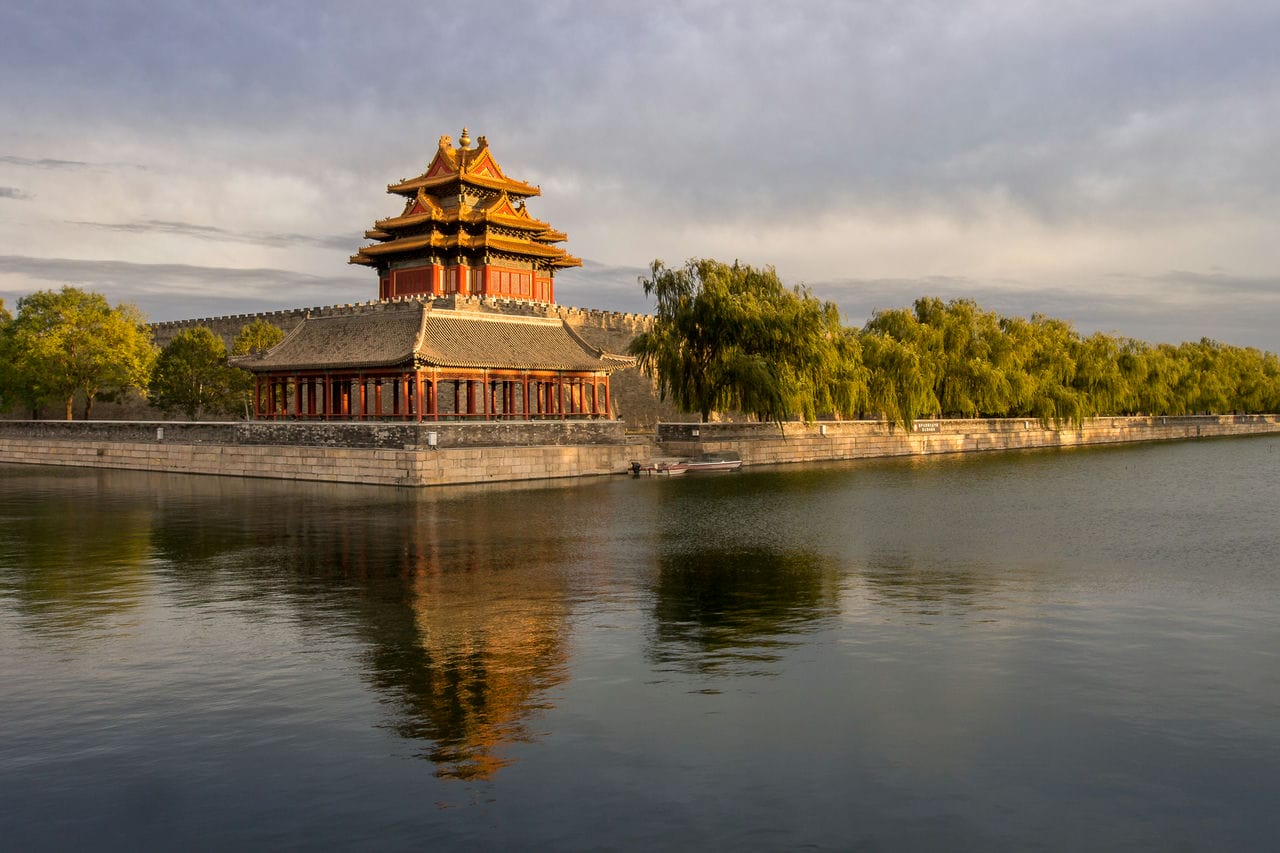
What purpose does the Forbidden City serve, and how does the design help?
The Forbidden City served as imperial China’s symbolic and political center for nearly 500 years. Its design helped to consolidate the emperor’s power and protect his security. The Forbidden City was built in Beijing by the Yongle emperor of the Ming dynasty in 1406. He moved the capital from Nanjing to Beijing to strengthen his control over the empire. He also wanted to create a new heart of the empire that would reflect his authority and legitimacy. The Forbidden City was the home of 24 emperors and their families and servants until 1925, when it became the Palace Museum. The Forbidden City followed the ideal cosmic order in Confucian ideology, which governed the Chinese social structure. The orientation, arrangement, and style of the buildings were determined by the rank and role of the occupants. The most important buildings, such as the Hall of Supreme Harmony, were located along the south-north axis and faced south to honor the sun. The emperor’s living quarters were in the inner court, while the outer court was used for ceremonies and state affairs. The buildings were designed according to the Treatise on Architectural Methods, which specified the details for different ranks of buildings. The Forbidden City was a microcosm of Chinese civilization and represented the emperor’s power and prestige. The name Forbidden City implied that it was off-limits to most people, except those who had permission or were summoned by the emperor. The color scheme of yellow and red symbolized the emperor’s supremacy and auspiciousness. The motifs of dragons and phoenixes signified the emperor’s authority and benevolence. The Forbidden City was also where the emperor performed rituals and ceremonies to maintain the harmony between heaven and earth.
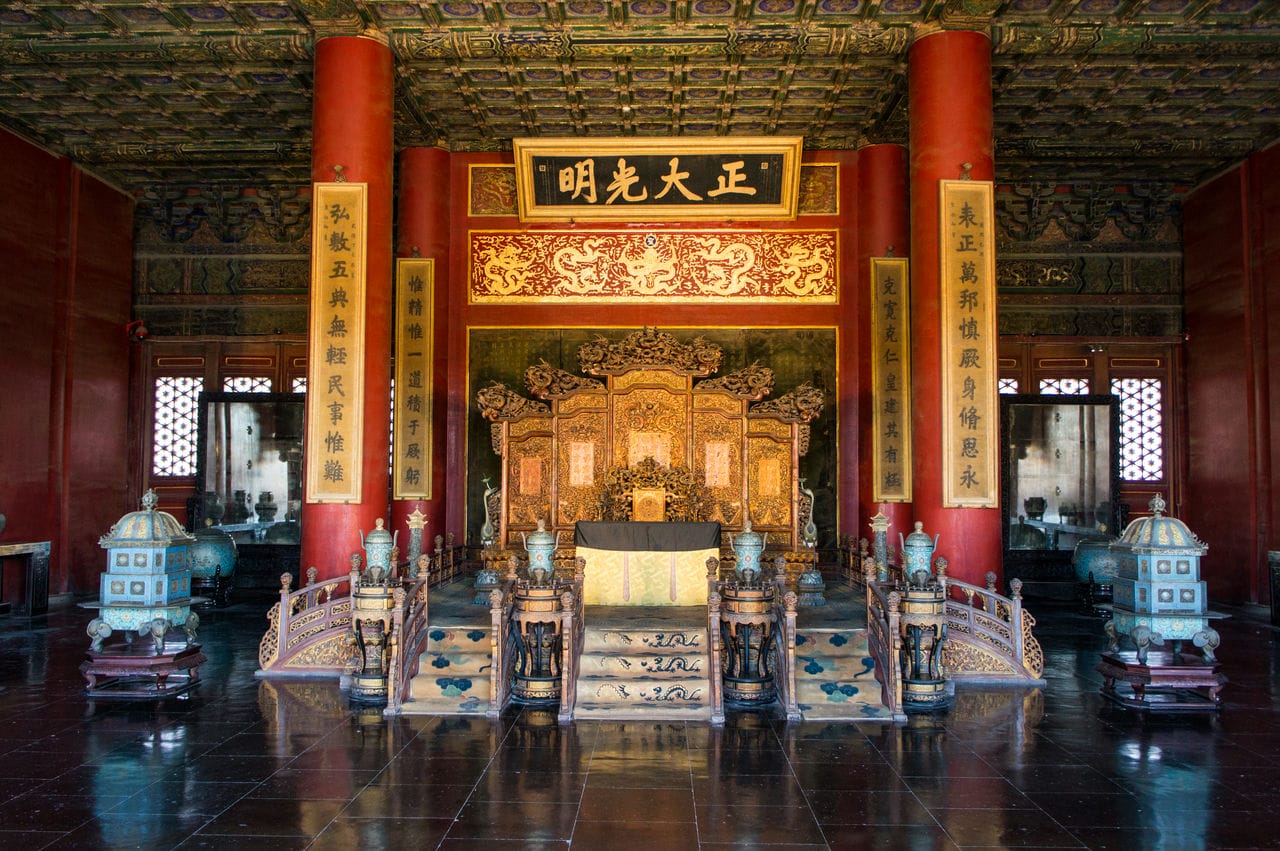
How is the Forbidden City maintained?
The Forbidden City is maintained through the expertise of dedicated professionals who employ traditional techniques and modern conservation practices to protect and preserve the iconic cultural heritage site for future generations. To maintain the structural integrity of the Forbidden City, routine inspections are conducted to identify and address any signs of deterioration or damage. Maintenance tasks such as repairing damaged roofs, walls, and foundations use traditional construction techniques and materials to preserve the site’s authenticity. Efforts are made to protect the Forbidden City from environmental factors. Climate control systems are in place to regulate temperature and humidity levels inside the buildings, preventing the adverse effects of extreme weather conditions on the delicate artifacts and structures. Strict security measures are implemented to ensure the safety and preservation of the Forbidden City. Surveillance systems, personnel patrols, and controlled visitor access help prevent damage, theft, or unauthorized alterations to the historical site.
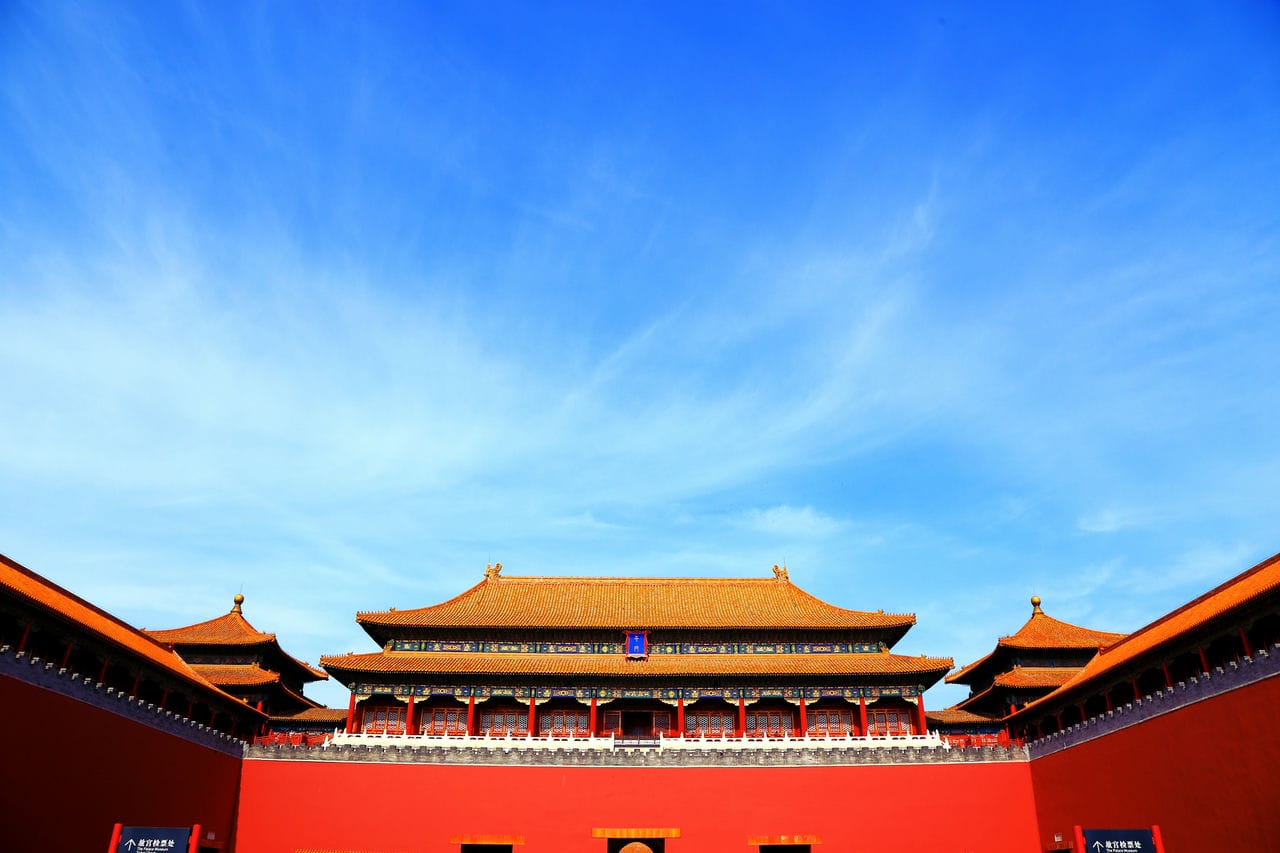
How does the Forbidden City reflect cultural and contextual relevance in its design?
The Forbidden City reflects cultural and contextual relevance in its design in 4 ways. Firstly, the Forbidden City follows the traditional Chinese geomantic practice of feng shui, which aims to harmonize human and natural forces. The orientation of the Forbidden City, and for that matter all of Beijing, follows a north-south line. All the most important buildings within the compound, especially those along the main axis, face south to honor the Sun. The layout of the Forbidden City also symbolizes the hierarchical order of the society, with the emperor at the center and the commoners at the periphery. Secondly, the Forbidden City represents China’s ancient official architecture, showing construction’s supreme techniques and craftsmanship. The buildings and the ceremonial spaces between them are arranged to convey an impression of great imperial power while reinforcing the insignificance of the individual. The architectural style of the Forbidden City is influenced by the styles of the previous dynasties, such as the Han, Tang, Song, and Yuan, but also incorporates some elements from the ethnic minorities, such as the Manchu and Mongols. The Forbidden City is the only existing imperial architectural complex in China. Thirdly, the Forbidden City is a treasure trove of China’s cultural heritage, housing more than 1.8 million pieces of relics from the Neolithic Age to the Qing Dynasty, even to modern times. These relics cover the best ones of both Han and ethnic nationalities. They can be classified into 25 big categories and 69 small categories. They are the tangible evidence of five thousand years of history and civilization of China. The Forbidden City also preserves many intangible cultural heritage, such as the imperial court’s rituals, ceremonies, music, and opera. Lastly, the Forbidden City symbolizes China’s rich cultural heritage and long history as a great civilization. It is also a major tourist attraction, attracting millions of yearly visitors. The palace complex is a source of pride for the Chinese people and a powerful symbol of their country’s past and present. It also plays an important role in promoting Sino-foreign cultural communication, as it showcases Chinese culture to the world and cooperates with international organizations and experts on conservation.
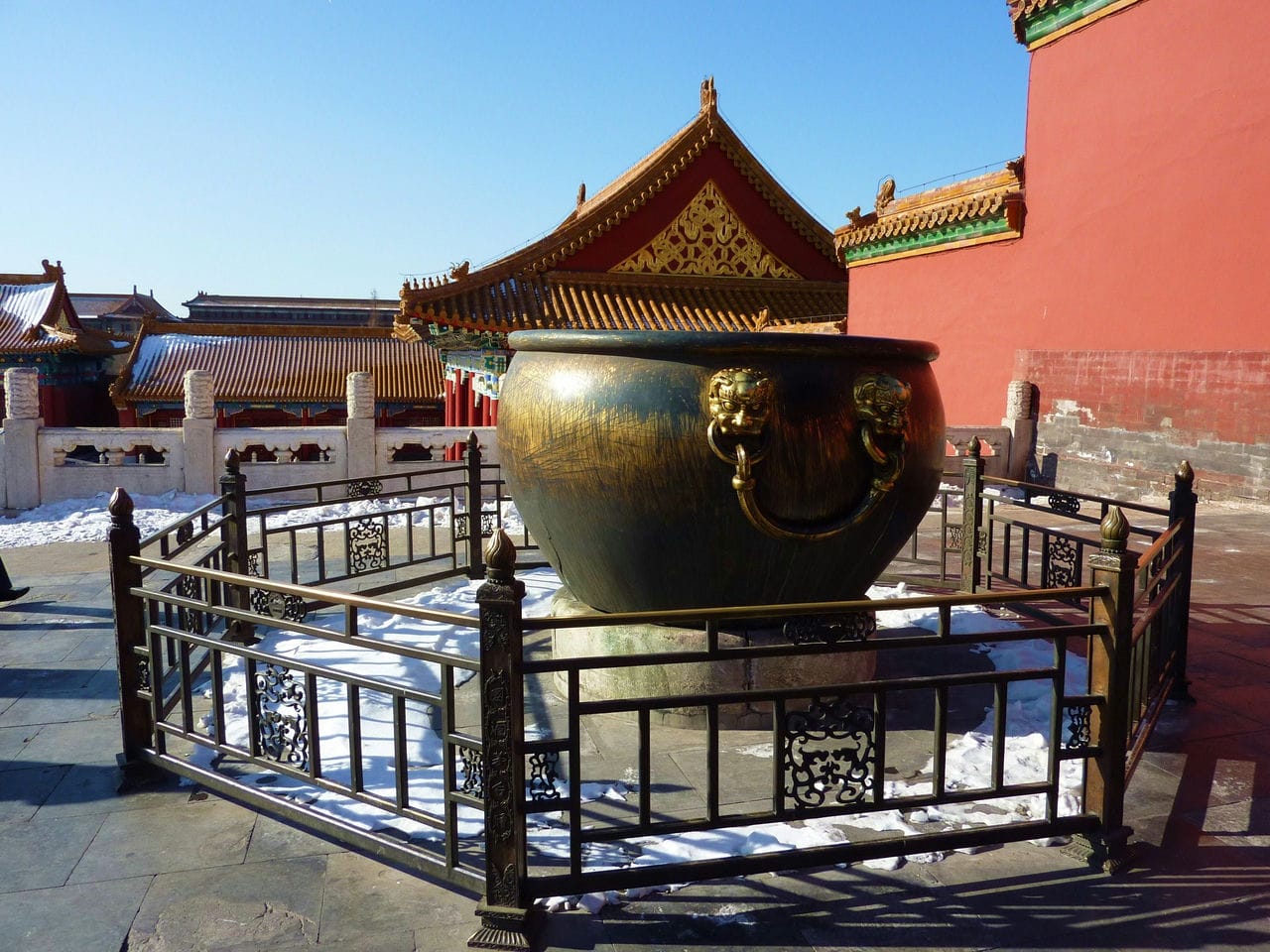
What architectural trend or movement does the Forbidden City represent?
The Forbidden City represents the architectural trend of traditional Chinese official architecture, which is influenced by the principles of feng shui, Confucian ideology, and imperial symbolism. Traditional Chinese official architecture follows feng shui principles, which aim to harmonize human and natural forces. The orientation of the Forbidden City, and for that matter all of Beijing, follows a north-south line, which is believed to honor the Sun and point toward Heaven. The layout of the Forbidden City is also symmetrical, with each building or space having a complementary component, and each side of the north-south axis complements the other. Traditional Chinese official architecture reflects the Confucian ideology, establishing stability and representing harmony between man and earth. The buildings and the ceremonial spaces between them are arranged to convey an impression of great imperial power while reinforcing the insignificance of the individual. The structure of the society is also symbolized by the layout, with the emperor at the center and the commoners at the periphery. Traditional Chinese official architecture expresses imperial symbolism, which shows the supreme authority and status of the emperor. The architectural style of the Forbidden City is influenced by the styles of the previous dynasties, such as the Han, Tang, Song, and Yuan, but also incorporates some elements from the ethnic minorities, such as the Manchu and Mongols. The buildings are designed in accordance with the Treatise on Architectural Methods or State Building Standards, an eleventh-century manual that specified particular designs for buildings of different ranks in Chinese social structure. The buildings’ colors, materials, and decorations also have symbolic meanings, such as yellow for royalty, red for prosperity, and dragon for power.
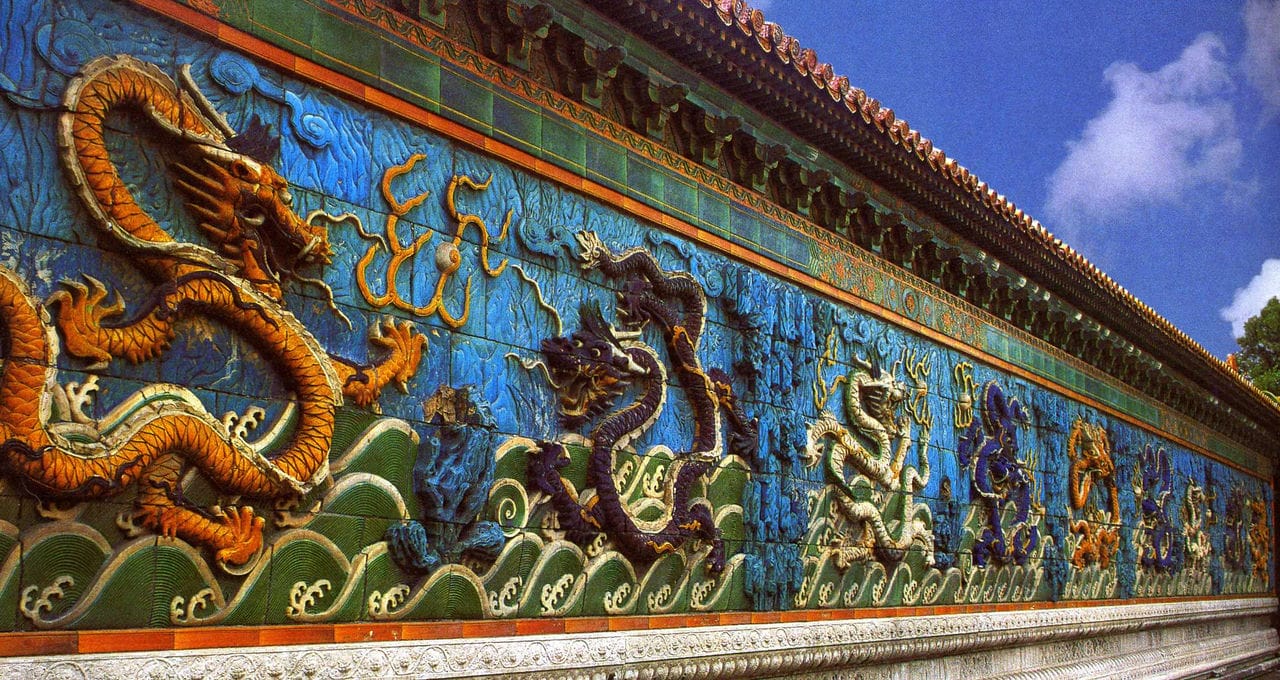
What are the challenges faced during the restoration of the Forbidden City?
There are 4 major challenges faced during the restoration of the Forbidden City. Firstly, the Forbidden City is exposed to the weather and climate changes, which can cause damage to the ancient buildings and artworks. The palace complex experienced three fires in its history, and most of the present palaces were rebuilt during the Qing Dynasty. The Forbidden City also suffers from heavy rainfall, snow, and wind, which can erode the structures’ roofs, walls, and foundations. Secondly, the Forbidden City is affected by the pollution and urbanization of Beijing, which can harm the site’s cultural heritage. Air pollution can cause corrosion and discoloration of buildings and artworks’ wooden, stone, and metal materials. Urbanization can also increase the traffic and noise around the palace complex, disturbing the site’s historical atmosphere and aesthetic value. Thirdly, the Forbidden City is threatened by pests and microorganisms, which can destroy cultural relics’ organic and inorganic materials. The termites, moths, rats, and birds can eat or damage the buildings and artworks’ wood, paper, silk, and leather. The microorganisms, such as fungi, bacteria, and algae, can grow on the surfaces of the materials and cause decay, stains, and odors. Lastly, the Forbidden City is vulnerable to vandalism and theft, which can endanger the security and integrity of the cultural heritage. Some visitors may graffiti, scratch, or break the buildings and artworks or steal small items, such as bricks, tiles, or ornaments. Some criminals may also attempt to rob or smuggle valuable relics, such as paintings, sculptures, or jewels.
How does the Forbidden City comply with contemporary safety and accessibility standards?
The Forbidden City complies with contemporary safety and accessibility standards in 4 ways. Firstly, the Forbidden City has improved its fire prevention and control system, which is essential for protecting the ancient wooden structures and cultural relics. The palace complex has installed fire hydrants, sprinklers, smoke detectors, and alarm systems and trained staff and volunteers to deal with fire emergencies. The fire risk is still high due to the large number of visitors, the use of candles and incense, and the lack of fire exits and evacuation routes. Secondly, the Forbidden City has opened some accessible tourist paths for visitors with disabilities, especially wheelchair users. The palace complex has built ramps, elevators, handrails, wheelchairs, audio guides, and sign language services. The accessibility is still limited due to the uneven and narrow paths, the steep stairs and thresholds, and the insufficient facilities and staff. Thirdly, the Forbidden City has enhanced its security and surveillance system, which is necessary to prevent theft and vandalism. The palace complex has installed cameras, metal detectors, and security gates and hired guards and police officers to patrol the grounds. The security is still vulnerable due to the huge crowds, the low visibility, and the easy access to cultural relics. Lastly, the Forbidden City has upgraded its environmental and sanitation system, which is important for preserving the historical buildings and artworks. The palace complex has adopted measures to reduce air pollution, such as banning cars and buses, planting trees and flowers, and using electric vehicles. The palace complex has also improved cleanliness and hygiene by providing trash bins, toilets, and drinking water. The dust, noise, and waste the visitors generate still affect the environment.
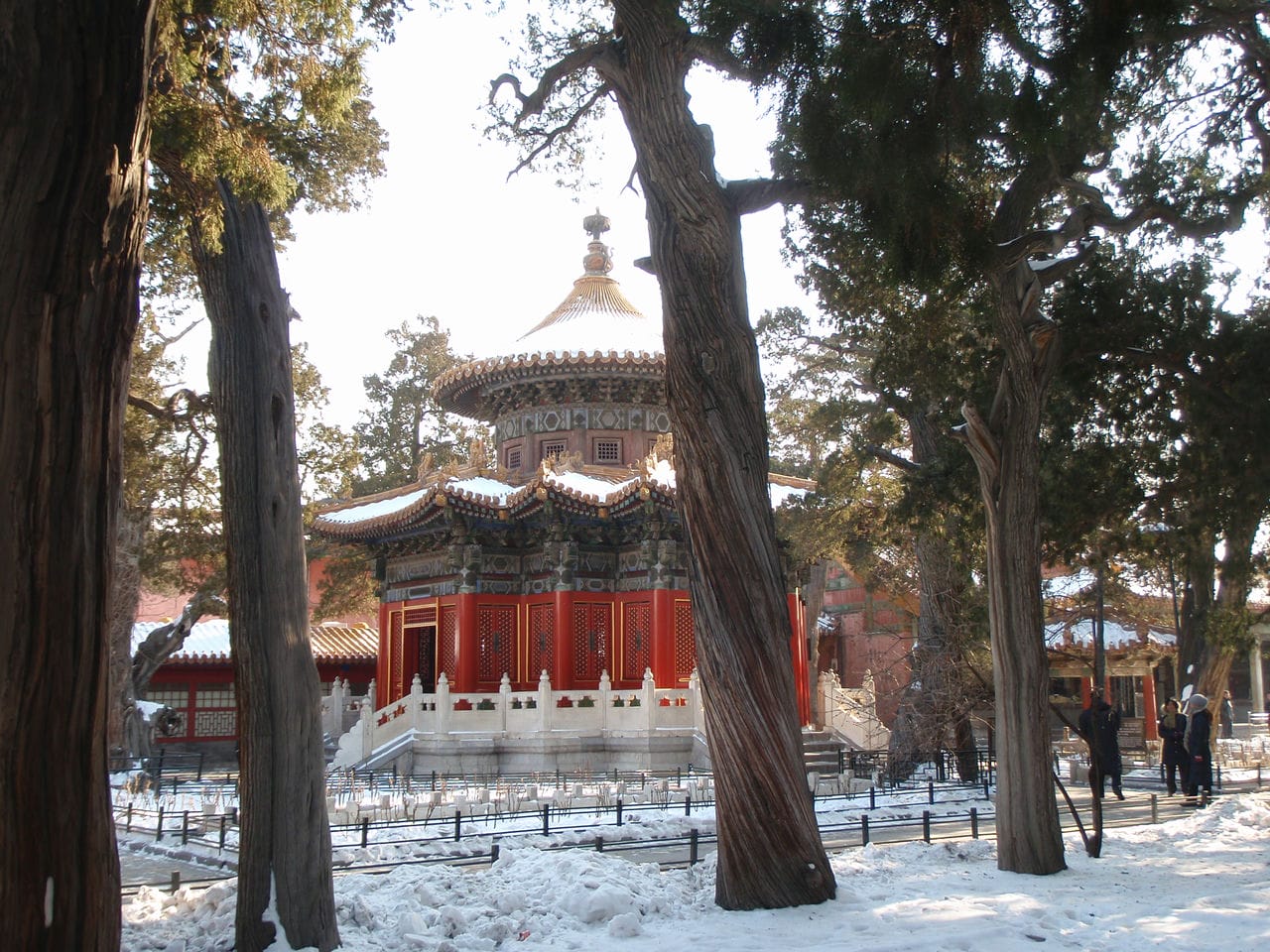
Are there any specific tours for architects or architecture enthusiasts to visit Forbidden City?
Yes, there are some specific tours for architects or architecture enthusiasts to visit the Forbidden City. The Forbidden City Architecture Tour is a half-day tour of the palace complex’s architectural features and symbolism. The tour guide will explain the principles of feng shui, Confucian ideology, and imperial symbolism that influenced the design and layout of the buildings. The tour will also cover the history and culture of the Ming and Qing dynasties and the restoration and preservation of the cultural heritage. The Forbidden City Heritage Discovery Tour is a full-day tour exploring the palace complex’s hidden gems and lesser-known areas. The tour guide will take visitors to the Royal Treasure Hall, the Clock and Watch Hall, the Hall of Mental Cultivation, and the Palace of Tranquil Longevity. The tour will also introduce the stories and anecdotes of the emperors, concubines, eunuchs, and officials who lived and worked in the Forbidden City. The Forbidden City, Temple of Heaven, and Summer Palace Tour is a full-day tour that combines the three most famous imperial sites in Beijing. The tour guide will show visitors the highlights of the Forbidden City, such as the Hall of Supreme Harmony, the Hall of Preserving Harmony, and the Imperial Garden. The tour will also visit the Temple of Heaven, where the emperors prayed for good harvests, and the Summer Palace, where the emperors enjoyed their leisure time.
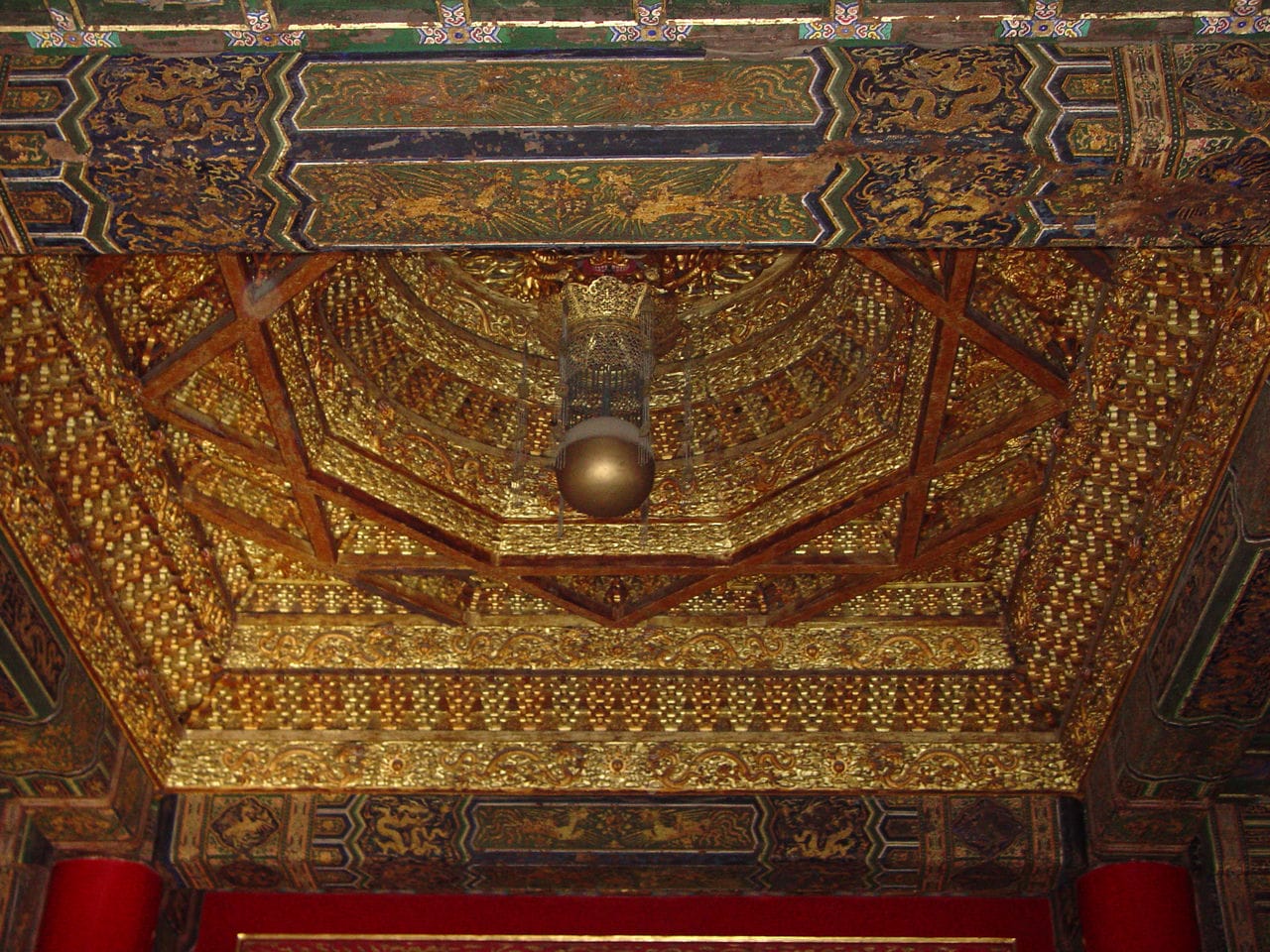
What lessons can architects learn from the design and construction of the Forbidden City?
There are 4 lessons that architects can learn from the design and construction of the Forbidden City. Firstly, architects can learn how to create a harmonious and balanced layout that reflects the cultural and cosmological values of the society. The Forbidden City was built on a symmetrical south-north axis, representing the connection between heaven and earth and the emperor’s authority. The buildings were arranged according to their functions and ranks, with the most important ones on the central axis and the others on the sides. The layout also followed feng shui principles, which aimed to achieve a harmonious energy flow and avoid negative influences. Secondly, architects can learn how to use natural and durable materials to construct buildings that can withstand the test of time and environment. The Forbidden City was mainly built of wood collected from different regions and treated as anti-corrosive and fire-resistant. The wooden structures were supported by stone foundations and brick walls, which provided stability and insulation. The roofs were covered with glazed tiles, which were colorful and waterproof. The buildings were also decorated with paintings, carvings, and ornaments, which added aesthetic value and cultural meaning. Thirdly, architects can learn to incorporate various architectural styles and elements to create a diverse and rich architectural expression. The Forbidden City was influenced by the architectural traditions of different dynasties and regions, such as the Han, Tang, Song, Yuan, Ming, and Qing. The buildings displayed different roof shapes, such as single-eave, double-eave, hip-and-gable, and pyramidal. The buildings also featured different architectural elements, such as columns, brackets, beams, rafters, and ridges. The buildings also showed different artistic styles, such as solemn, elegant, delicate, and exquisite. Lastly, architects can learn to adapt and innovate architectural design and construction to meet society’s changing needs and challenges. The Forbidden City was not a static and fixed architecture but a dynamic and evolving one. The buildings were constantly repaired, renovated, and rebuilt according to the preferences and policies of different emperors and periods. The buildings were also affected by natural disasters, wars, and cultural revolutions, which caused damage and destruction. The buildings were also influenced by foreign cultures and technologies, which brought new ideas and methods.
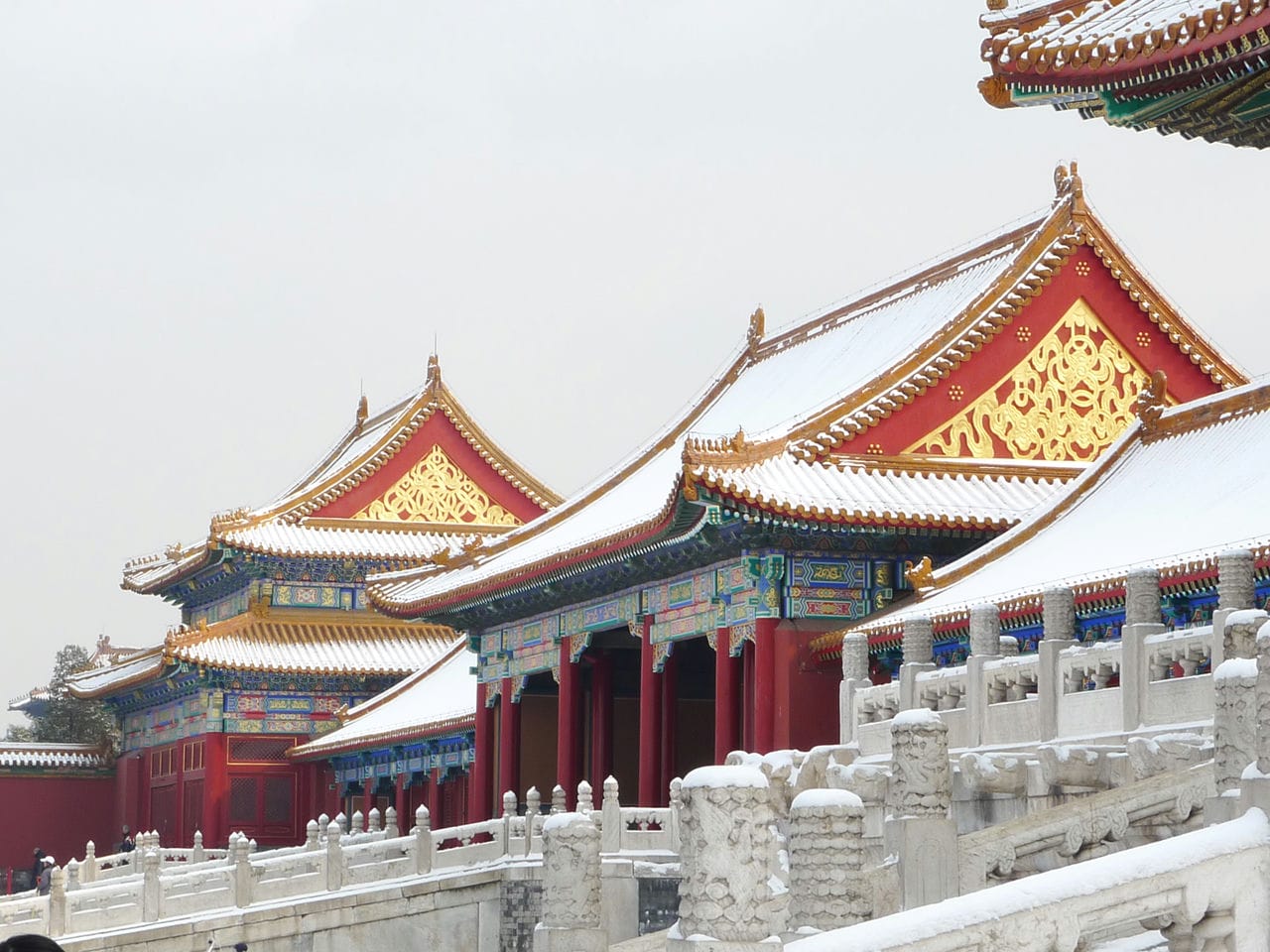
What are the best architectural landmarks to visit as an architect?
Listed below are the best architectural landmarks to visit as an architect:
- Sagrada Familia: The Sagrada Familia is an iconic basilica located in Barcelona, Spain. Designed by popular architect Antoni Gaudí, it is known for its unique and intricate architectural style that combines Gothic and Art Nouveau influences. The basilica has been under construction since 1882 and is still ongoing, making it a fascinating example of long-term architectural vision and dedication. Visitors can admire the stunning facades, soaring towers, and intricate details that make the Sagrada Familia a must-visit landmark for architects and enthusiasts alike.
- Taj Mahal: The Taj Mahal is a UNESCO World Heritage site in Agra, India. Built in the 17th century by Emperor Shah Jahan as a mausoleum for his beloved wife, it is considered one of the most beautiful examples of Mughal architecture. The Taj Mahal features intricate marble inlay work, symmetrical design elements, and a stunning white marble exterior. Its harmonious proportions and elegant details make it a masterpiece of architectural craftsmanship, attracting millions of visitors annually.
- Sydney Opera House: The Sydney Opera House is an iconic performing arts center in Sydney, Australia. Designed by Danish architect Jørn Utzon, it is known for its distinctive sail-like roof structure. The complex houses multiple performance venues and symbolizes modern expressionist architecture. Its innovative design and engineering challenges make it a significant landmark in architectural history. Visitors can take guided tours to explore the interior spaces and learn about the architectural concepts behind this world-famous structure.
- Guggenheim Museum Bilbao: The Guggenheim Museum Bilbao is a contemporary art museum in Bilbao, Spain. Designed by architect Frank Gehry, it is recognized for its striking, curvilinear form and titanium-clad exterior. The museum’s unconventional design pushes the boundaries of traditional architecture, creating a visually captivating and highly acclaimed landmark. Inside, visitors can experience a diverse collection of modern and contemporary art. The Guggenheim Museum Bilbao has revitalized the city, symbolizing urban regeneration through architecture.
- Fallingwater: Fallingwater is a residential house located in Mill Run, Pennsylvania. Designed by architect Frank Lloyd Wright, it is an iconic example of organic architecture that integrates seamlessly with its natural surroundings. The house is built over a waterfall and features cantilevered balconies and open spaces that blur the boundaries between indoors and outdoors. Fallingwater showcases Wright’s principles of harmony between architecture and nature, making it a significant landmark for architects interested in sustainable design.
- St. Peter’s Basilica: St. Peter’s Basilica is a major basilica in Vatican City, Rome. Designed by known architects, including Michelangelo and Gian Lorenzo Bernini, it is the largest church in the world and a masterpiece of Renaissance and Baroque architecture. The basilica’s grandeur is evident in its vast dome, intricate mosaics, and numerous works of art. Architects can appreciate the meticulous detailing and craftsmanship that went into creating this architectural marvel. Visitors can explore the interior, including the famous St. Peter’s Square, and marvel at its architectural and artistic splendor.
- The Louvre: The Louvre is a world-known art museum in Paris, France. Originally a medieval fortress, it was transformed into a grand palace and later became a museum. The Louvre is celebrated for its iconic glass pyramid entrance, designed by architect I.M. Pei. The museum houses an extensive collection of art and historical artifacts, including famous works such as the Mona Lisa. Architects can appreciate the museum’s architectural evolution, from its historic roots to the modern additions that have transformed it into a cultural landmark.
- Burj Khalifa: The Burj Khalifa is a skyscraper in Dubai, United Arab Emirates. Designed by the architectural firm Skidmore, Owings & Merrill, it is the tallest building in the world, standing at 2,717 feet (828 meters). The Burj Khalifa’s sleek and futuristic design features a stepped silhouette and a reflective glass facade. Its engineering marvels, such as the advanced structural systems and high-speed elevators, make it an impressive landmark for architects interested in tall building design. Visitors can enjoy panoramic views of Dubai from the observation decks on the upper floors.
- The Parthenon: The Parthenon is an ancient temple atop the Acropolis hill in Athens, Greece. Built in the 5th century BCE, it symbolizes classical Greek architecture and is one of the most influential buildings in Western history. The Parthenon showcases the Doric order with its iconic columns and pediments adorned with marble sculptures. Its harmonious proportions and refined architectural details demonstrate the principles of balance and symmetry. Architects can study the Parthenon’s design to understand the foundations of classical architecture and its enduring impact on architectural aesthetics.
- The Great Wall of China: The Great Wall of China is an ancient fortification that stretches across northern China. It is an architectural marvel and a UNESCO World Heritage site built over centuries. The wall showcases various construction techniques, including brick, stone, and rammed earth. Its strategic design incorporates watchtowers, battlements, and defensive features. The Great Wall’s vast scale and historical significance make it a remarkable landmark for architects interested in the intersection of architecture and military engineering. Visitors can explore different sections of the wall and admire the panoramic views of the surrounding landscapes.


